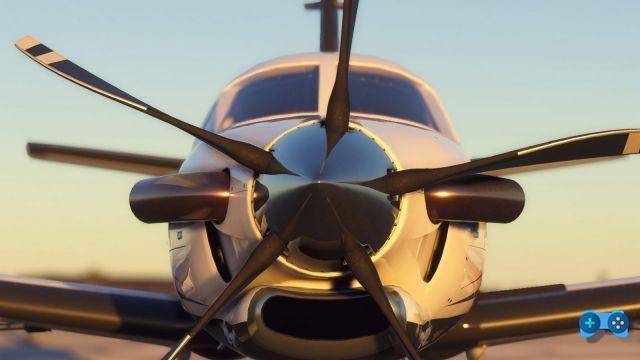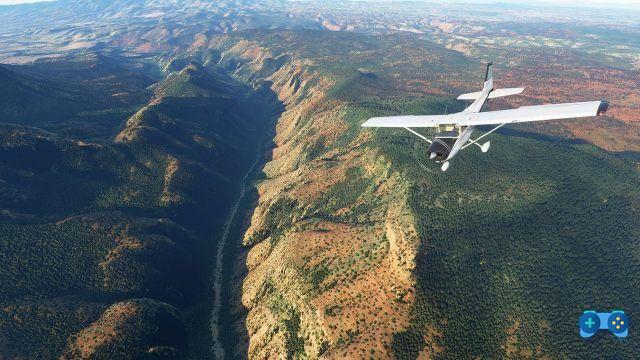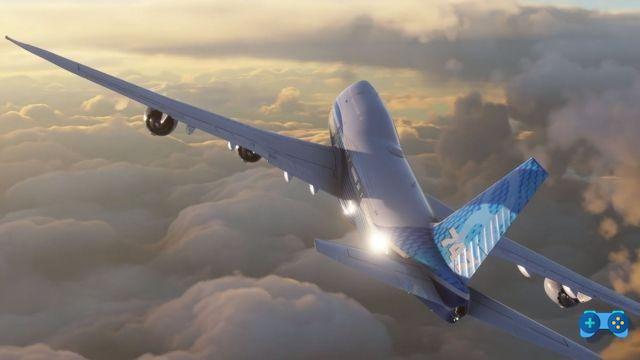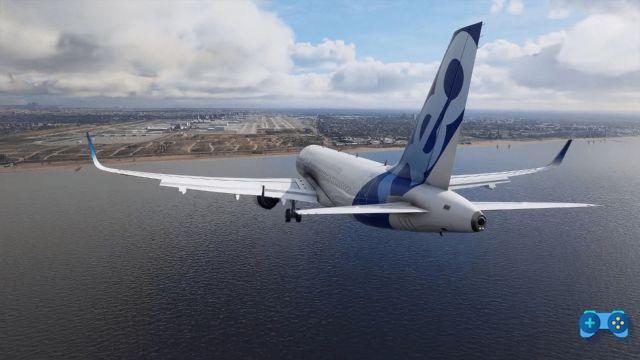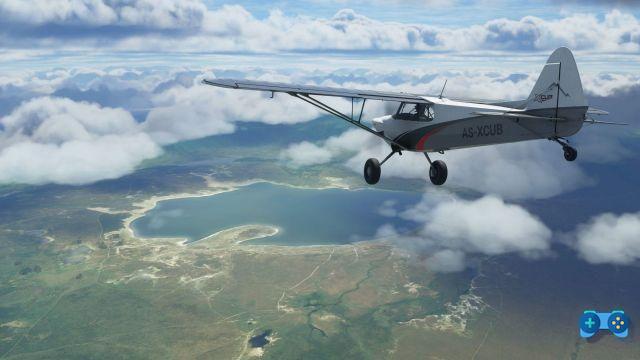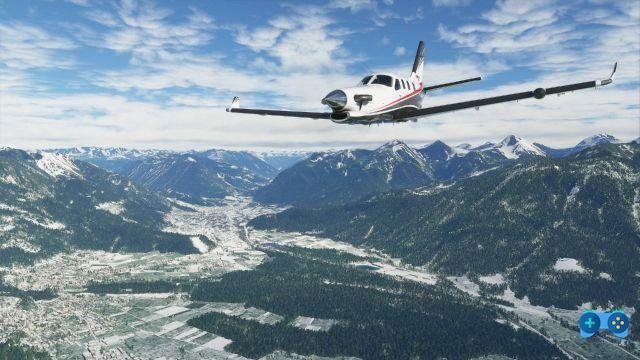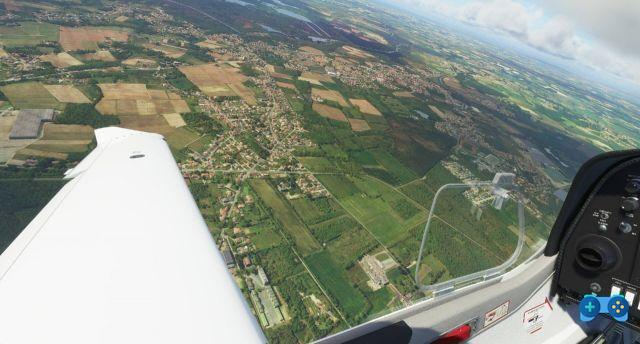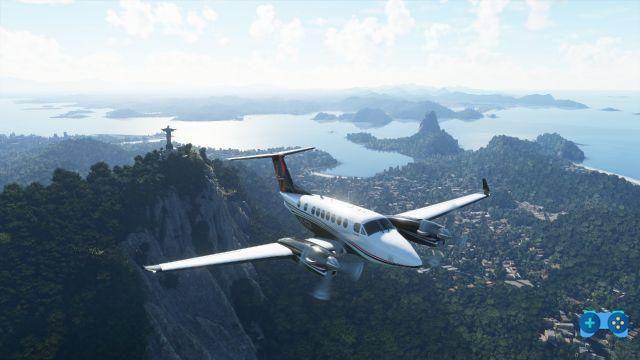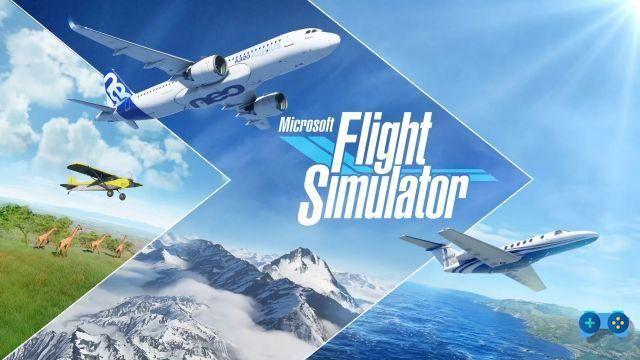
The ultimate flight simulator is ready for take-off.
Flying is probably the oldest desire of man, who has always been fascinated by the nature of birds. The laws of physics have made this dream impossible for millennia, counting hundreds of unsuccessful attempts and experiments. Among these we remember the technological innovations of Leonardo Da Vinci, such as the parachute, or the Greek myth of Daedalus and Icarus, who built wings with bird feathers but ended with the death of the second.
In short, man has always tried to fly, also thanks to the sensation of extreme freedom that the vastness of the sky transmits. The first successful manned flight was completed in 1783 by two Frenchmen, who managed to fly for 26 minutes over Paris in a hot air balloon. From that moment the interest in the conquest of the skies experienced a decisive increase, but the definitive turning point came precisely on December 17 1903: with a real motor plane, the Wright brothers managed to fly for 12 seconds covering a distance of 36 meters. That event changed the world forever, marking a continuous evolution in the field of aviation in the following decades up to the present day, in which airplanes are perfectly integrated into the daily life of each of us between commuting for work and travel.
Despite the prices now within everyone's reach, not everyone could have the opportunity to fly in life, whether it is absence of necessity or for reasons sometimes related to health. If, on the other hand, we think of how many of us would like to experience the thrill of flying a plane, the probability drops to zero unless you intend to become a pilot since childhood (and actually fulfill your dream). On the virtual level, there are several video games or applications that can put us in the shoes of a highly decorated fighter pilot rather than an airliner. The similarity with reality, however, is practically nil, unless we are talking about the new Microsoft Flight Simulator.
The highly anticipated latest effort by the guys from Asobo Studio and XBOX Game Studios offers a simulation experience of the highest quality from every point of view, with an unprecedented and impressive level of fidelity and photorealism. The title is currently only available on PC and has several editions, starting from the Standard for € 69,99 (free with XBOX Game Pass) up to the Premium Deluxe for € 119,99 which includes 10 exclusive airplanes and 10 additional international airports. However, the arrival on XBOX One and XBOX Series X by the end of the year has also been confirmed.
Before letting you know our impressions, We want to thank Microsoft for providing us with a digital copy of the game in advance for review purposes.
Around the world from the chair at home
It is important to point out that Microsoft Flight Simulator it should not be called a video game, but the entertainment product par excellence in the field of flight simulators. The care taken in the realization of every detail is obsessive, to the point of making it a reliable training tool for real pilots. This does not mean that there are several accessibility options for newbies so as to allow a greater slice of users to enjoy it, but we assure you that anyone will be amazed by the mammoth work done.
We will be able to get hold of one quite provided quantity of preparation parameters, variable depending on the plane we decide to fly. These even include the dosage of the fuel mixture and the individual weight of the driver, co-driver and any luggage. The same applies to the presence of stress damage due to high G-force, freezing effects, failures of various origins, modifiable weather conditions and so on and so forth. At the highest level of realism, the complexity of each flight is guaranteed and every little unexpected event can have a significant impact on our routes, whether long or short. By fiddling with all the settings at our disposal, therefore, it is possible to faithfully reproduce any situation in every variant, even as regards the speed of the wind.
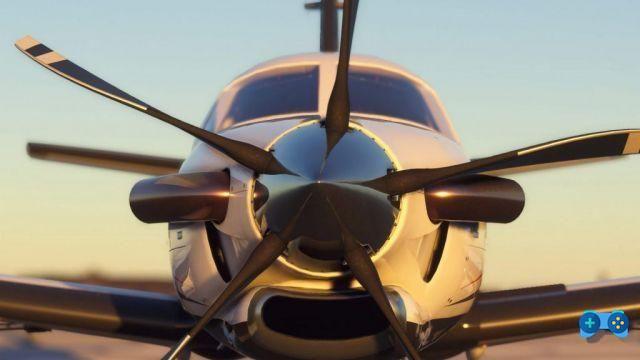
Since the title is presented as a simulator in its purest essence, do not expect campaigns or missions to be completed. The main method is in fact based on the simple selection of a place of departure and destination for our trips, whether on national or intercontinental territory, the duration of which corresponds to the real one. Yes, we too could hardly believe it but you got it right. We made our first full flight from the Sandro Pertini airport in Caselle Torinese to the Charles de Gaulle airport in Paris, which according to what is reported on the internet takes about an hour and fifteen minutes without stopping. Guess what? It took us the same amount of time to go through the title, another element that denotes the accuracy and immensity of the development. It goes without saying that long crossings, even with different stopovers set up to refuel and so on, can easily become boring for those who mistake Microsoft Flight Simulator for a classic video game.
They exist anyway a couple of alternate modes who can count on a set goal, namely landing challenges in difficult conditions, nature excursions to remote locations and daily challenges. Obviously, the tutorial is not missing, which among other things manages to provide a fair smattering in learning flight notions and aviation technicalities. Obviously we are not claiming that it can replace a school for the training of real pilots, but the various concepts explained are clear.
Currently they are present 30 aircraft to choose from, each with unique stats and handling. From the light and agile Cessna 152 to the giants of the sky like the Boeing 747, the flight experience is never the same and you can feel the difference between a “simple” airplane and a hundreds of seats airliner. Each model is perfectly cared for in every single detail, especially as regards the control instrumentation which really does not lack anything and with which it is possible to interact in the round. Whether you play in first person or with an external view, the interface is clean and understandable, even if in the second case some data on the screen (such as the "window" to check flight times) could invade the scene a little too much if always kept active.
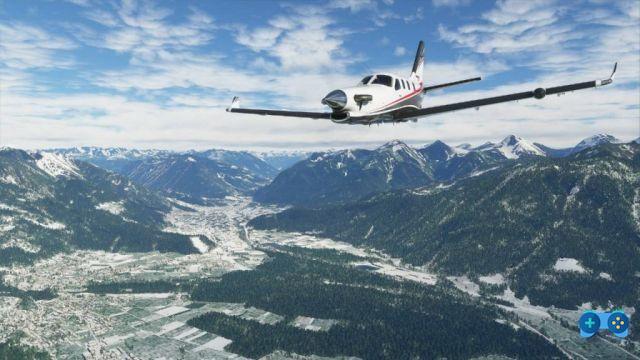
Even the Earth was made in a very detailed way, thanks to the use of a particular machine learning technology based on Azure servers able to reproduce and update the world map in real time by communicating with Bing. The result is therefore an unparalleled photorealism that makes the already thin line with the virtual practically non-existent: every street, building, mountain, river and the like correspond exactly to the real position. Likely, we were able to locate our house without any difficulty even in the case of small villages, being impressed by how what we saw outside the window or our usual places were identical.
To fully exploit the potential of this fantastic system and enjoy the best experience, however, it is necessary have a rather performing connection: to ensure that the streaming of satellite data takes place in an optimal way, in fact, the beauty of 50 Mbps is needed. Aware of the fact that this is a rather high value compared to the current average, Microsoft has still set 5 Mbps as a minimum requirement and 20 Mbps as recommended. This undoubtedly results in the preloading of some areas for slower connections and, consequently, a greater dilation of the initial loading times.
Microsoft Flight Simulator then matters over 37.000 airports in the world, albeit only the most prestigious, about eighty, can boast an in-depth and very detailed reproduction. In any case, the “less important” ones have nothing to envy to the others in terms of aesthetic performance. Furthermore, during our crossings, we will constantly communicate with the various control towers and we will be updated on air traffic and other factors just like it happens live.
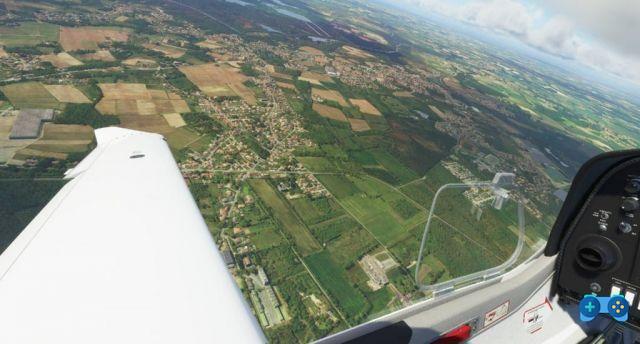
"Great configurations come from a great detail"
As presumably from the reinterpretation of the famous phrase, a high demand in terms of hardware power also derives from such a mammoth product. First of all, a curiosity that perhaps not everyone knows: if the title were to install all the necessary data locally, it would take 2 PB (petabytes) of storage space, which is about 2.000 TB. Given the immense amount of data, all the details of the world are downloaded and managed as needed from Microsoft's cloud data centers, leaving users a task of “only” 100 GB of downloads.
Microsoft Flight Simulator does not send you to say even from the graphic point of view: to be admired in all its glory, at least 32 GB of RAM, an AMD Ryzen 7 2700X / Intel Core i7 9800X and an NVIDIA RTX 2080 / AMD Radeon VII would be required . Fortunately, the Redmond giant worked hard so that its simulator could also be used on medium-low-end systems, effectively gaining a larger share of the public. We have tested everything with a configuration that is no longer in step with the times:
| Operating System | Windows 10 Pro 64-bit |
| RAM | 16 GB |
| Processor | Intel Core i7-5820K @ 4.0 GHz |
| Graphic card | NVIDIA GeForce GTX 1070 8GB VRAM |
| Monitor | Acer Predator 27 ″ 144 Hz with G-Sync |
From a rendering point of view, the default graphics settings were on Very High, offering a great balance between performance and visual fidelity. The monitor's G-Sync technology helped a lot in maintaining an acceptable frame rate (above 60 fps), but on more than one occasion, especially when we were on the ground, it fluctuated between 35 and 50 fps. By reducing the settings it is obviously possible to obtain an adequate fluidity on most of the configurations, however at the expense of the general quality that visibly loses that aura of majesty and perfection that pervades the game.
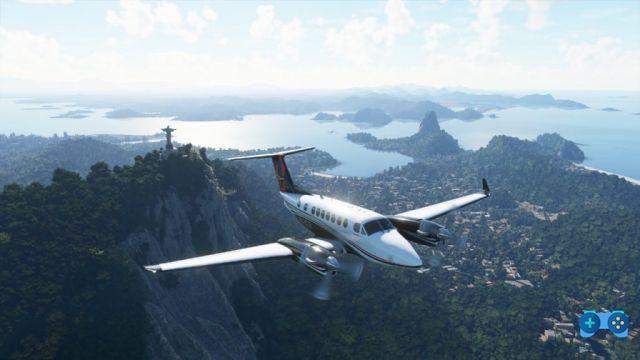
The controls are generally comfortable both with keyboard and mouse and with the controller, proving to be less cumbersome than we expected in both cases. However, to achieve the maximum degree of immersion and satisfaction a cloche is recommended, to be combined with a virtual reality viewer for a 360-degree experience. In this regard, it is good to know that support for VR headsets will arrive by the end of the year in conjunction with the launch of the new HP Reverb G2, the first device fully compatible with Microsoft Flight Simulator which will then be followed by other models.
Finally, let's spend a few words on the audio sector, perfect for general and engine sound effects as well as for radio communications. The latter are in English as it is the main international language.
Final comment
The ambitious project of the guys from Asobo Studio and XBOX Game Studios has hit the target: the new Microsoft Flight Simulator it is not a game, but it is the flight simulator par excellence that everyone has been waiting for. The level of realism is incredible, from the world updated in real time to the maniacal details of the planes, as well as the work done to make it accessible even to newbies who simply want to experience the thrill of exploring the globe while sitting comfortably at home. Once again, we would like to define it as a real training tool disguised as a video game in which the developers have expertly enclosed all the notions of aviation. The result is a very high quality product which, analyzed in its true soul (that of a simulator in fact), can also count on a strong potential for use outside the home.
